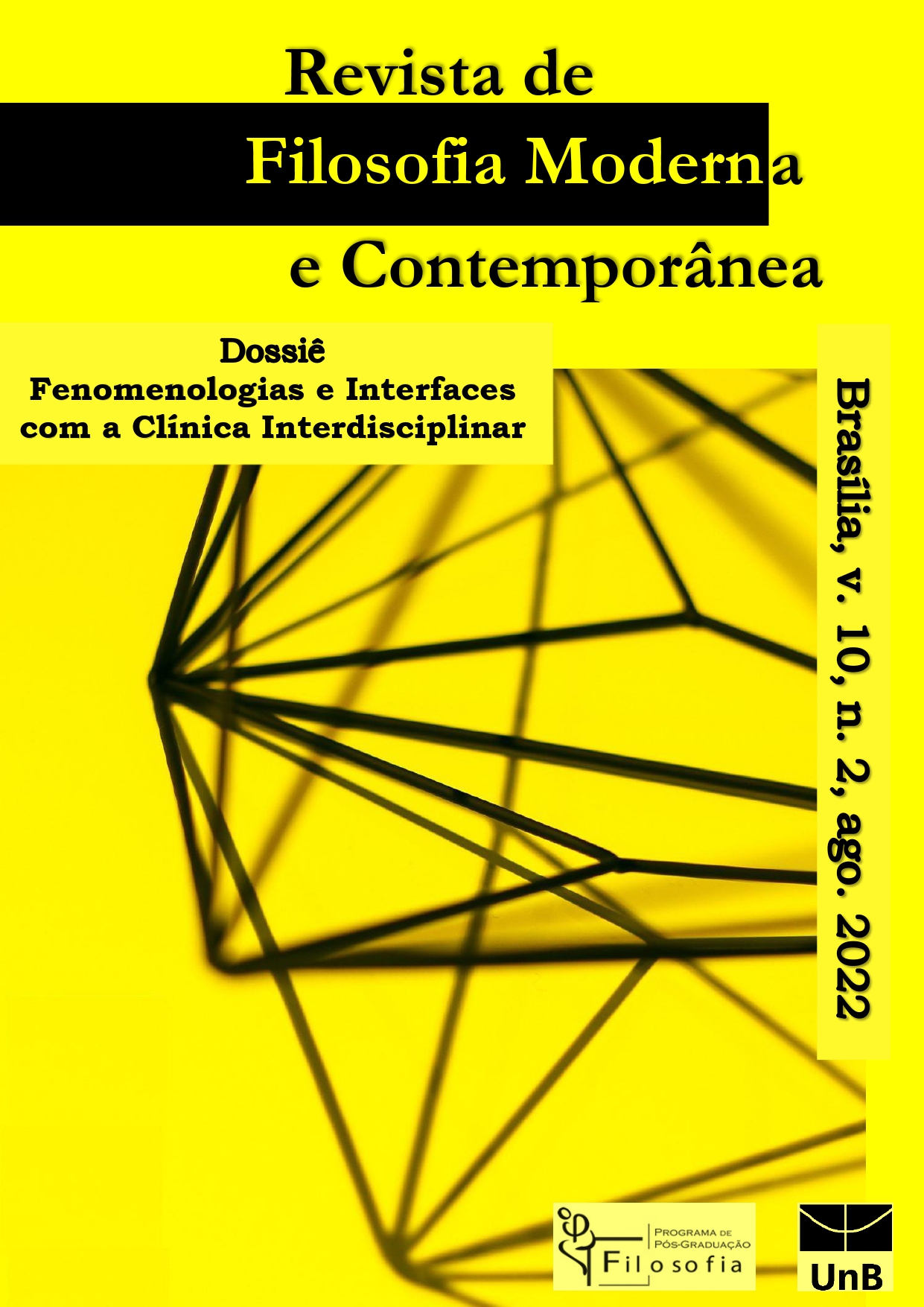Franz Bretano’s Theory of Intentionality and Analogy of the Experience of Hearing to Voices
DOI:
https://doi.org/10.26512/rfmc.v10i2.48534Keywords:
Intentionality. Brentano. Voice hearing.Abstract
Brentano’s theory of Intentionality gave rise to empirical psychology, considered by the mental acts of external objects and consciousness. In this sense, the purpose of this essay is to reflect on the phenomenon of auditory hallucinations, from the perspective of Franz Brentano’s intentionality, as a representative psychic phenomenon of internal experience. Auditory hallucinations, under a phenomenological approach, are considered as an experience of the relational process of a historical person. In analogy to the theory of the intentionality of mental acts, the phenomenon of listening to voices becomes an experience perceived in the internal understanding of existential meanings, which must occur through two types of acts: the personal meaning, represented; and to relate, through intentional conduct, with the experienced reality. Finally, the importance of Brentano’s studies for humanist approaches I consider inseparable from phenomenological psychopathology, and therefore, makes it possible to reflect on the field of mental health.
References
BARROS, O. C., MELCA, F. M. A. SERPA JR, O. D. Redes e mídias sociais: o potencial multiplicador para a ajuda mútua de ouvidores de vozes. J. nurs. Health, 8 (n.esp.), 2018, 188418. https://doi.org/10.15210/JONAH.V8I0.14120
BRENTANO, F. Psychology from an empirical standpoint. London: Routledge Regan Paul. 1973.
BRITO, E. O. O projeto de fundação da ciência da educação: convergiencias entrte Frnz Brentano e Jojn Stuart Mill. Perspectiva, Florianopolis, v.35, n.4, p. 1089-1108, out/dez. 2017.
BORIS, G. D. J. B. A (pouco conhecida) contribuição de Brentano para as psicoterapias humanistas. Revista da Abordagem Gestáltica – XVII(2): 193-197, 2011, jul-dez.
Downloads
Published
Issue
Section
License
Copyright (c) 2022 Journal of Modern and Contemporary Philosophy

This work is licensed under a Creative Commons Attribution-NonCommercial-NoDerivatives 4.0 International License.
Copyright for articles published in this journal is retained by the authors, with first publication rights granted to the journal. By virtue of their appearance in this open access journal, articles are free to use, with proper attribution, in educational and other non-commercial settings.


